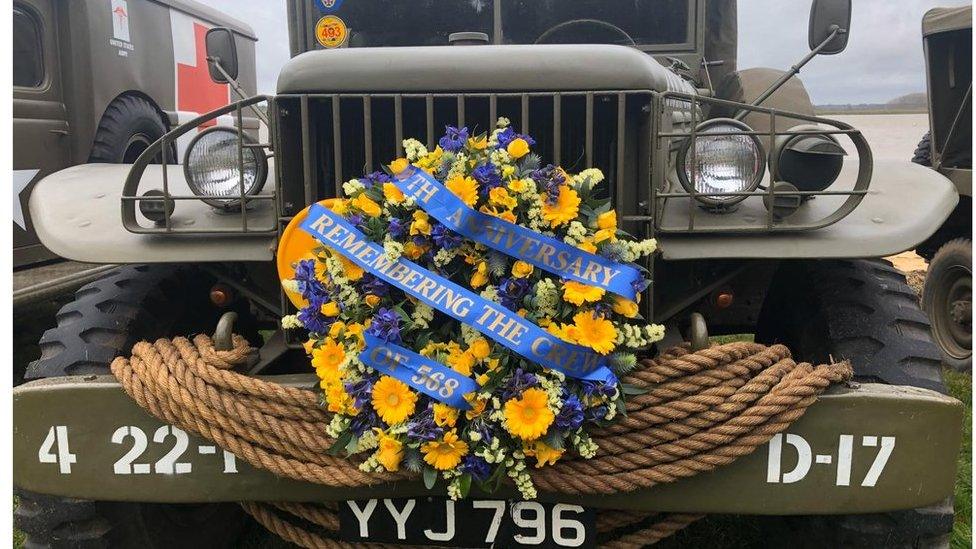Diver's footage reveals ditched WW2 bomber
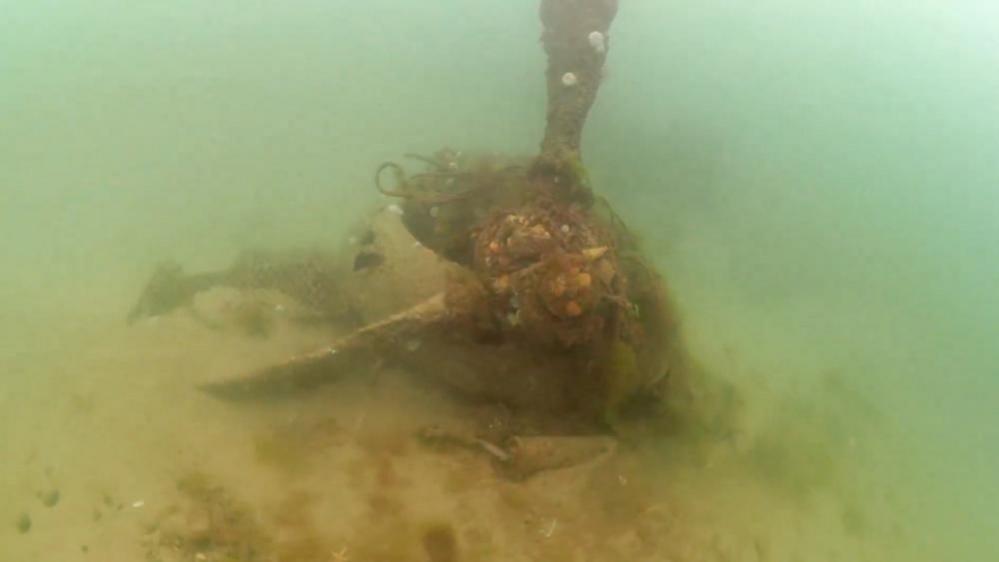
The wreck of the World War Two bomber was found in shallow water off the Norfolk coast
- Published
A World War Two bomber that ditched in the North Sea more than 80 years ago has been filmed in its watery grave for the first time.
Rob Spray, a diver from Suffolk, came across the Handley-Page Hampden off Salthouse on the north Norfolk coast while filming sea life.
The RAF bomber ran out of fuel as it returned from a raid over Berlin on 1 September 1940.
Geoff Mandale, whose father Sgt James "Jimmy" Mandale was the plane's rear gunner, said it was "incredible" to see the footage, adding: "He’s done a really good job, that diver - I have to thank him."
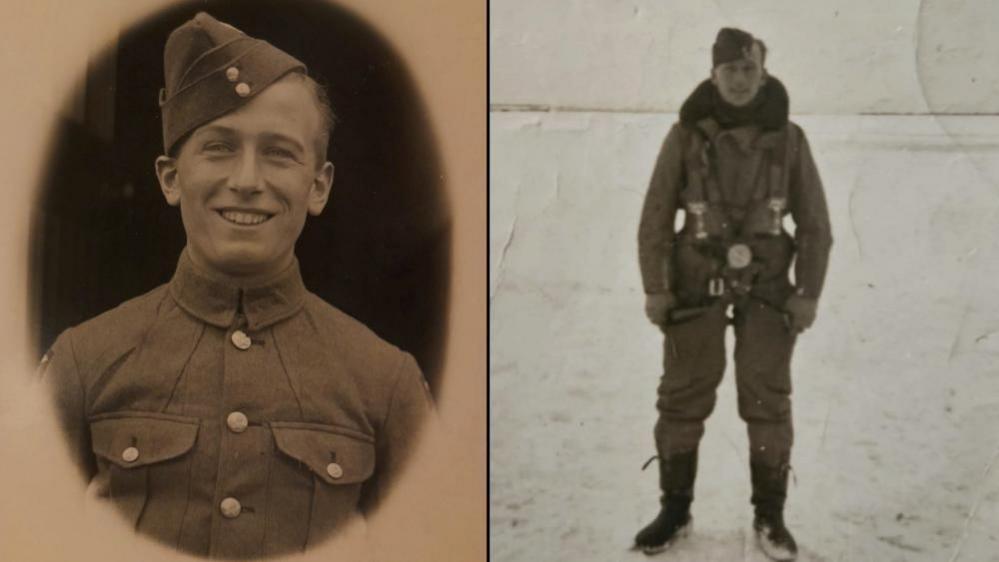
Sgt James "Jimmy" Mandale was the rear gunner on board the Hampden
Sgt Mandale survived the incident, alongside fellow Briton Sgt Harry Logan and Canadians David Romans and Donald Stewart, the plane's pilot and navigator respectively.
Mr Mandale, of Whitehaven, Cumbria, said that despite flying 47 missions, his father never saw any enemy aircraft to shoot at.
"You would call him lucky," he said.
On seeing Mr Spray's footage, he said: "I had no emotion because nobody lost a life.
"I think if one of my dad's mates had lost his life and he’d survived, that would have been a touching point."
Sgt Mandale survived the war and died 40 years ago, aged 63.
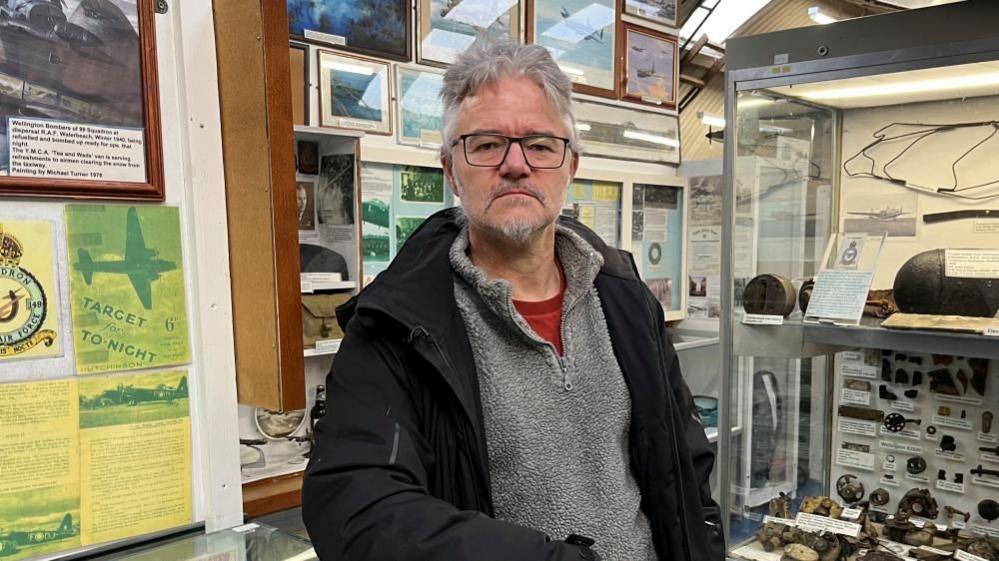
Rob Spray said the aircraft's wreckage "loomed out of the murk"
Mr Spray, chair of the Marine Conservation for Norfolk Action Group, found the aircraft lying in about 23ft (7m) of water.
"I was looking for interesting bits of seabed and this loomed out of the slight murk," he said.
"The clincher was 'that's an aircraft engine with a propeller on'. It was quite a big piece of wreckage and it's got to have been there since the war, so these are 80-year-old artefacts hanging around on the seabed."
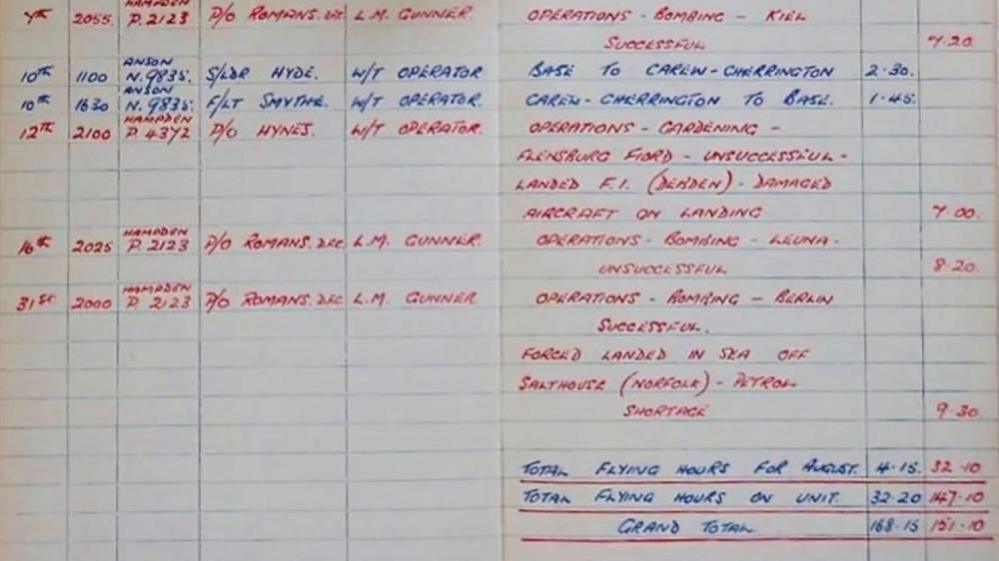
In the flight log book, pilot David Romans wrote "forced landed in sea off Salthouse (Norfolk) - Petrol Shortage"

Paul Hennessey, from Norfolk Wreck Research, helped identify the bomber
Paul Hennessey, from Norfolk Wreck Research, helped identify it as bomber P2123, but the task was made harder because only one engine was present.
Further research showed the other had been recovered in 1975 after fishermen snagged their crab pots on it, and had been at the Norfolk and Suffolk Aviation Museum at Flixton, near Bungay, Suffolk, ever since.
"Basically, we just put all the pieces together and came up with the conclusion that the aircraft Rob had was the Hampden," he said.
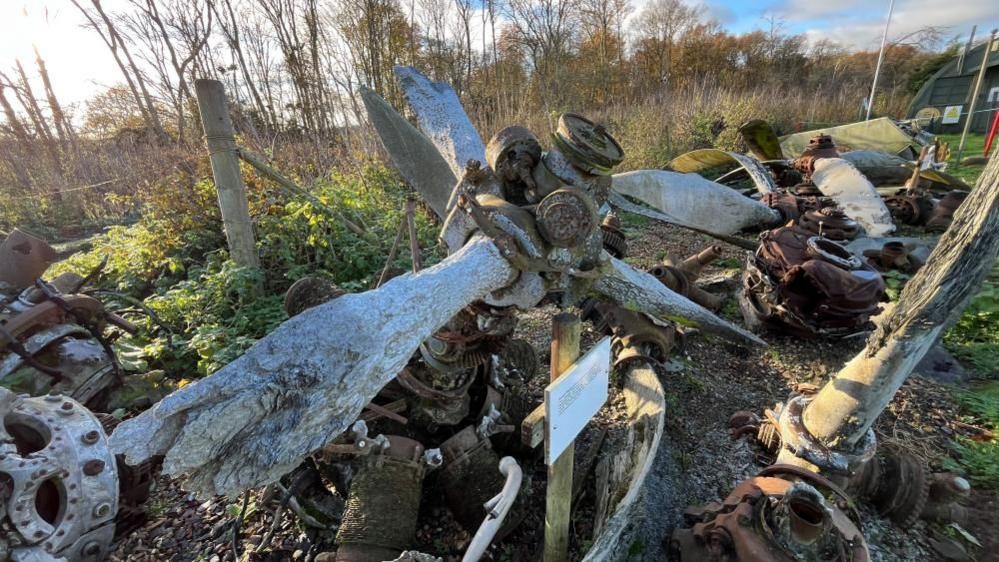
One engine, salvaged from the Hampden, has been in a museum for 50 years
Aviation historian Bob Collis, from the museum, said the Handley-Page Hampden was "a largely forgotten" aircraft.
"There were over 1,000 built, but only three examples left in museums," he said.
The bomber is one of many wrecked aircraft littering the seabed around the British coast but is unlikely to be recovered.
Get in touch
Do you have a story suggestion for Norfolk?
Follow Norfolk news on BBC Sounds, Facebook, external, Instagram, external and X, external.
Related topics
More stories like this
- Published23 July 2024
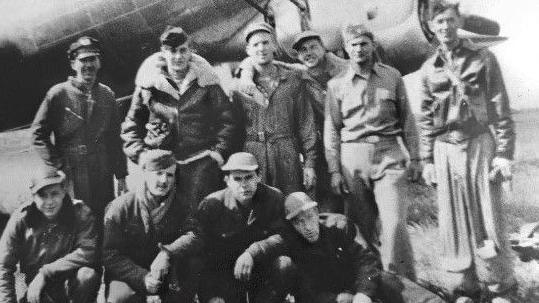
- Published20 February 2020
